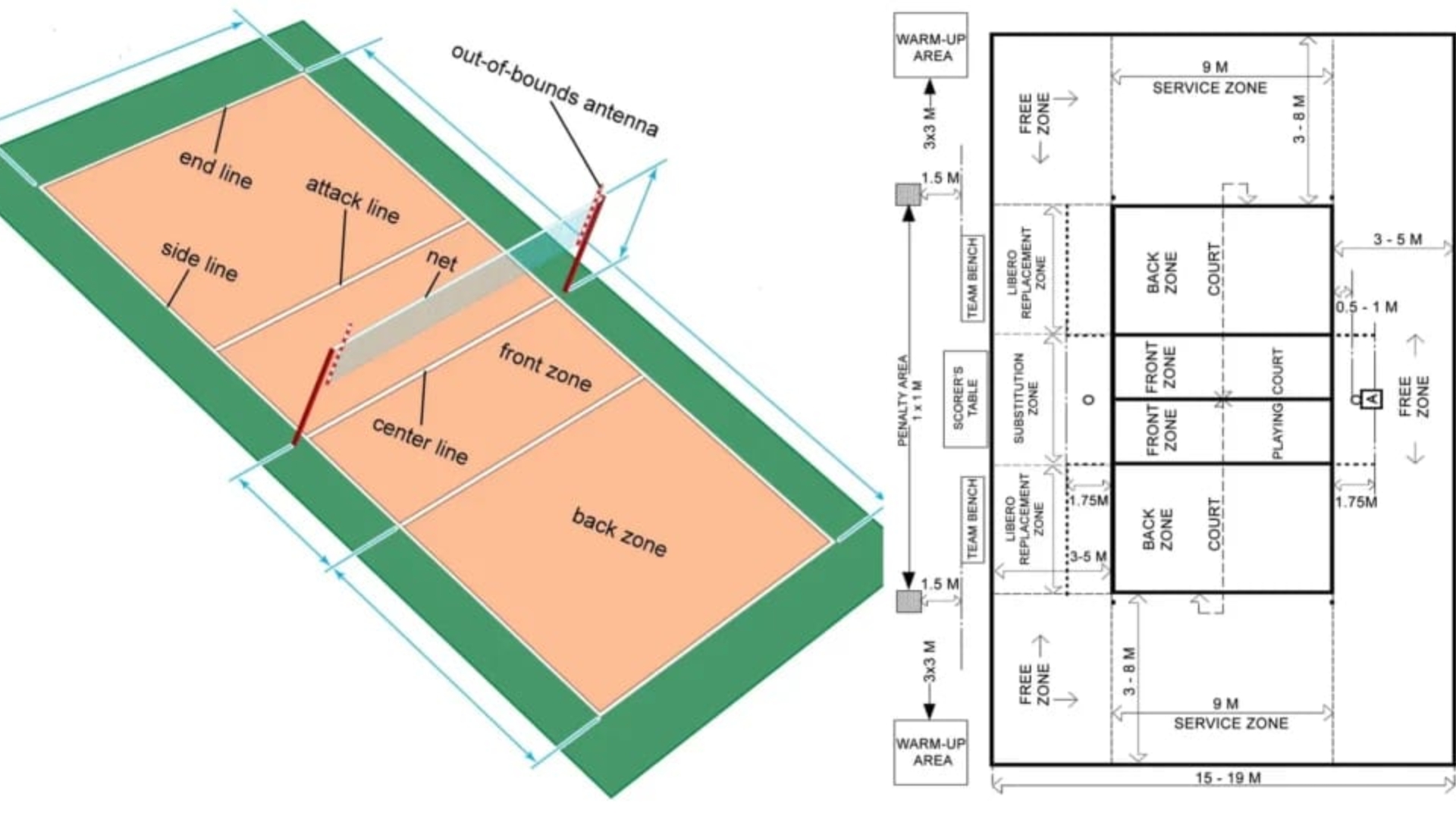Volleyball plays are tactical moves and positions that are adopted by teams in order to organize scoring and to attack. These plays are based on accurate communication, time, and coordination. The positionings, such as 4-2, 6-2, and the 5-1 positioning, form the basis of attack plans. Every play, be it a speedy middle hit or a back-row strike, presents power combined with tact in the game. The knowledge of these plays improves the performance of players and the appreciation of fans.
Research and scholars emphasize the role of team volleyball plays in winning. Studies focus on the use of formations and lightning attacks to disorient the forces. Analysts observe that good passes and decisions of setters are the key to an effective play. Researchers are in agreement that the coordinated movements generate scoring opportunities. It is also evident that combinations are harder to defend, as shown by previous studies that indicate that they are more unpredictable.
Plays in volleyball are not tactics only, but are the blood of the game. Every action narrates a tale of collaboration and accuracy. It is like seeing a piece of art when a team plays flawless play. The beauty is that of the unity of players functioning as a unit. This melody turns ordinary performances into memorable experiences on the court. We are going to investigate kinds, approaches, and techniques. You will get to know how teams organize attacks. You will observe how they get points.

Understanding Formations: The Foundation of Plays
A team needs to have a formation before the start of a play. The formation determines the role of players. It establishes the offensive organization. Volleyball has three common formations. They are the 4-2, 6-2, and 5-1. These figures depict hitters and setters.
The 4-2 Formation
Four hitters are used in this formation. It uses two setters. It is a basic setup. You hear it frequently at the lower levels of play. The setters are facing each other on the court. This will ensure a setter in the front row at all times. The front-row setter leads the offence. This structure has limited options for attack. It is simple to learn.
The 6-2 Formation
The 6-2 formation is a way to the maximum offense. It features six hitters. Two players are also setters. The back row player goes to set. This leaves three assailants in the front line. The benefit is always a three-hitter assault. Such a formation needs versatile players. Setters are also required to be good hitters.
The 5-1 Formation
The 5-1 is an advanced and popular formation. A setter is one of the players. This forms a rather homogeneous crime. There are five main attackers in the team. The setter can sit in the rear row. This will enable three hitters to be positioned in the front row always. The setter can also attack the ball when he or she is in front of the row. It is a combination of the 4-2 and the 6-2. Therefore, it provides numerous offensive solutions. It demands an artful, intelligent setter.
Offensive Plays: A Numbering System.
Plays are counted in a numbering system. The hitters are called to play by the setter. They represent the height of the set as well. And it all begins with a good pass. A bad pass restricts the setter’s choices.
Outside Hitter Plays
The most common attacker of a team is the outside hitter. Their plays are various.
- The 4 Play: This is an outer high set. The setter is pointing with four fingers. The ball approaches the antenna. This gives the hitter time. They can hit down the line. They can also hit cross-court.
- The Shoot: It is quite a quick play. The setter holds his hand in the shape of a gun. The ball is rolled low and quickly to the outside. It travels just above the net. The hitter should position his or her jump at the right time. When the setter receives the ball, they jump.
Middle Blocker Plays
Middle blockers execute fast attacks. They are paid to strike against the blocking opponents.
- The 1 Play: This strategy is a fast one. The setter shows one finger. The setter is positioned next to the hitter. The set is very low. Just high enough, it is, to strike over the net. The hitter swings as the setter throws. This drama has the power to surprise the defense.
- The Slide: This is a play of movement. The hitter is running behind the setter and along the net. They jump off one foot. The setter transmits a set to the antenna. This play relocates the point of attack. It makes blocking difficult.
Opposite Hitter Plays
The right-side opposing-hitter strikes. They offer one more powerful offensive weapon.
The 5 Play: This is a high-back set. The setter depicts five fingers. The ball will be to the right side antenna. It resembles the 4 play of the outside hitter. It generates an effective one-on-one.
The Back 1: This is a fast back formation. The setter points his pinky finger. The set is low and fast. It occurs in the back of the head of the setter. This drama keeps the defense in suspense.
Back Row Attacks
Backline assault is a good alternative. It gives an extra dimension to the crime.
The Pipe: This type of attack is made by the middle back. The batter leaps behind the 10-foot line. The set is normally high in the centre of the court. A back-row hitter may sign his fertility by saying “pipe” to indicate his position.
Combinations Plays: Baffling the Defense.
Combination plays are those where three or more attackers are used. They move at the same time. The plays must have impeccable timing and a flawless pass.
The X Play
It is a humorous mix of the X play. The center blocker does a blistering one play. The outside hitter has a 2 play that he runs right behind them. Their paths form an “X” shape. The setter reads the defense. The setter chooses what hitter to set. In case they disregard the middle, the setter will be able to provide a fast kill.
The Double Quick
Another fatal combination is the double quick. The middle blocker executes a 1 play. The other hitter makes a fast behind 1 play. There are two attackers in the air at almost the same time. Who to block is a matter of choice by the defense. This usually puts one of the hitters without a blocker or with one. It is the final decision that is made by the setter. The result is often a point.
Plays the Strategic considerations of running plays.
The strategy that should be used is to select the appropriate play. A team must know its identity.
Small, Fast: Smaller and faster teams enjoy a fast offense. They employ a combination and quick sets. The aim is to overcome blockers in rapidity. This is a strategy that relies on great passing. The passes should be low, quick, and accurate.
Slower Offense: Tall teams having strong hitters can play with a slower offense. They are dependent on high sets to the outside. It is less critical to beat blockers so fast. It concerns putting big hitters on a good ball to hit. They can strike over or into the block. One more component of strategy is the serve. Strategic serve can disorient the offense of the opponent. The tactic of serving to a weak passer is a common one. Playing between two players provokes a communication misunderstanding. A low serve may take the opponent out of his system.
Conclusion
It is not all about memorizing numbers for volleyball plays. It is concerned with creating a non-verbal language in the court. Each hand signal is a word. A team that plays the play perfectly in a manner that results in perfect execution really feels like a well-composed piece of music. Volleyball is not beautiful because of the spike of a single man. It is on the five other players that caused that spike to be possible. The pass, the set, and the decoy routes all lead to that great moment. It is this co-operation, this common sense of action, which is really the core of the game. It makes a team of sporting players one unified team.











